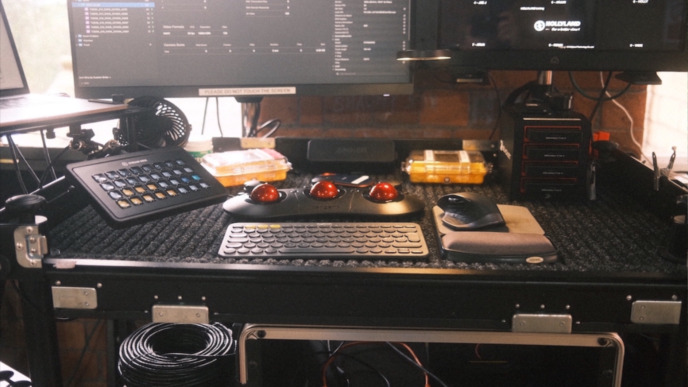
We have recently been asked in support which storage on set solution we would recommend. This is a tricky question to answer remotely with only little knowledge of the production environment.
It made me think if we can somehow objectify this question and break it down to define general criteria for storage on set. Read my thoughts on this which finally end up with six criteria for storage on set you can use to make your very own choice.
Why is the Choice of Storage On Set Important?
Why is the choice of storage on set a crucial component for every digital film production? As the complete production value of a scene is caught inside the digital frames of the camera source files, they definitely deserve dedicated attention. The initial copy of the source material is the first transfer of data after it was created by the camera. This usually happens on or close to the film set, and already at this early moment terms such as “checksums”, “redundancy”, “copy speed”, “RAID” and “secure copy” form requirements for the right purchase decision for the backup storage.
In order to understand this topic in more depth, it is important to distinguish the different purposes that storage on set can serve:
Categories for Storage On Set
On-set storage can serve different purposes. In general it can be divided into two functional groups:
- Online storage
- Offline storage
Online storage is usually realized as a RAID system with both high capacity and fast I/O rates. It assures redundancy as well as fast copy speeds and provides sufficient capacity. It usually stays with the DIT as his primary storage for all material during the entire production.
Offline storage refers to shuttle drives and smaller storage media, that are easy to transport and store. They are used for several purposes like assuring redundancy, transferring source footage to the lab, or transferring dailies to the editor. Smaller shuttle drives usually have slower transfer speeds and less capacity, and therefore are more flexible, easier to ship and fit in carry-on luggage better.
6 Criteria for On-Set Storage
Independent of the category, basic decision criteria generally apply to all types of on-set storage:
- Performance/Speed
This is probably the most important topic. Fast transfer speeds should be at the very heart of your choice of storage: They will help you leaving the set on time and assure the end of transfers before the power plug is pulled. Also think about both directions of access (read and write, maybe even simultaneously) as you might want to use media on the drive while writing on it.
- Capacity
Probably the most obvious of decision criteria. Choose a size that can handle your shoot easily and fits the budget. You might have to trade off capacity against performance. There are a few tools available that help you estimate the daily need of storage depending shooting ratio and camera format.
- Compatibility and Connectivity
USB 2, USB 3, Thunderbolt 2 and 3, USB-C – there are tons or variants of connectors and interfaces. Clarify hardware as well as software compatibility while choosing your on-set storage solution. Think about the whole production chain, all involved systems and workflows as well as your own (or given) software and hardware environment.
- Stability
The 101st copy should run like the first one. Stability throughout lifetime and constant performance under all circumstances make a drive your best companion. Be aware that HDDs (in contrast to SSDs) tend to slow down the fuller they are.
- Robustness
Bumps and shocks can happen any time on a rough shooting day. Make sure your on-set storage can tolerate basic shocks. Worrying about your media with every move of the drive will not help you staying relaxed while focusing on all the other tasks that have to be done.
- Portability
Lighter, faster, bigger, better – more expensive. Make sure your storage solutions fit your production environment. This applies to both mentioned categories of storage on set as you will always have space and weight issues considering your complete equipment. Consider flash storage to improve portability and performance all in one.
Now: Make Your Own Choice
These practical criteria for on-set storage should give you food for thoughts to make your own decision. Don’t hesitate to let us know if you identify more bullet points for this list or have a comment about it. No production is the same, and so we are curious about your requirements for storage – especially if you find yourself in special situations like shooting in the Sahara, on a plane or in the swimming pool.
As we love hardware but build software I can’t help but give a quick note on the software side of things: Particular software solutions specialized in media management will do a good job copying securely and providing you the toolset to use your storage on set to its full potential. Our software Silverstack can copy and manage media on set across multiple destinations and sources. While it is not the only solution in the market it’s definitely worth to take a look at and learn about the benefits for your media management on set with Silverstack.




